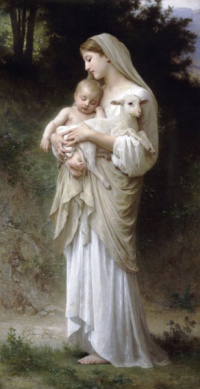Good and evil
From The Art and Popular Culture Encyclopedia

|
Related e |
|
Featured: |
In religion, ethics, and philosophy, the phrase, good and evil refers to the location of objects, desires, and behaviors on a two-way spectrum, with one direction being morally positive ("good"), and the other morally negative ("evil"). "Good" is a broad concept but it typically deals with an association with life, charity, continuity, happiness, and prosperity. Evil is more simply defined: the opposite of good. Depending on the context, good and evil may represent personal judgments, societal norms, or claims of absolute value related to human nature or to transcendent religious standards.
The nature of goodness has been given many treatments; one is that the good is based on the natural love, bonding, and affection that begins at the earliest stages of personal development; another is that goodness is a product of knowing truth. Differing views also exist as to why evil might arise. Many religious and philosophical traditions claim that evil behavior is an aberration that results from the imperfect human condition (e.g. "The Fall of Man"). Sometimes, evil is attributed to the existence of free will and human agency. Some argue that evil itself is ultimately based in an ignorance of truth (i.e., human value, sanctity, divinity). A variety of Enlightenment thinkers have alleged the opposite, by suggesting that evil is learned as a consequence of tyrannical social structures.
Theories of moral goodness inquire into what sorts of things are good, and what the word "good" really means in the abstract. As a philosophical concept, goodness might represent a hope that natural love be continuous, expansive, and all-inclusive. In a monotheistic religious context, it is by this hope that an important concept of God is derived —as an infinite projection of love, manifest as goodness in the lives of people. In other contexts, the good is viewed to be whatever produces the best consequences upon the lives of people, especially with regard to their states of well being.
See also
See also
- Axiology
- Common good
- Descriptive ethics
- Evil
- Inductive reasoning
- Meta-ethics
- Supreme good
- Sin
- Value theory

